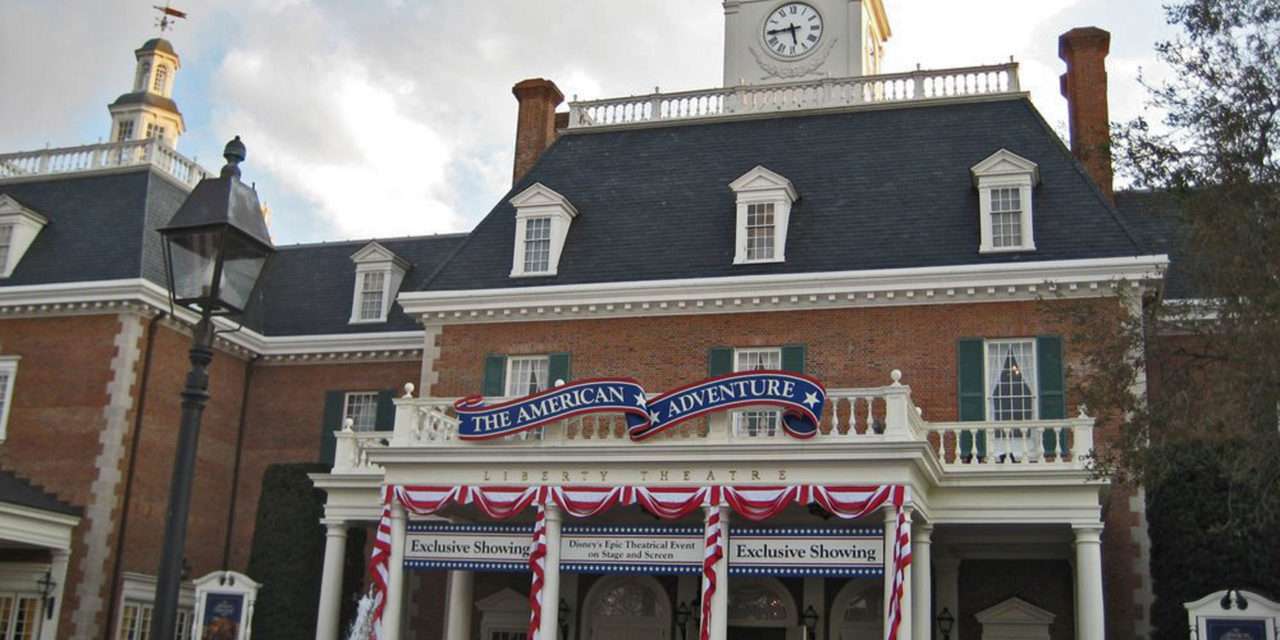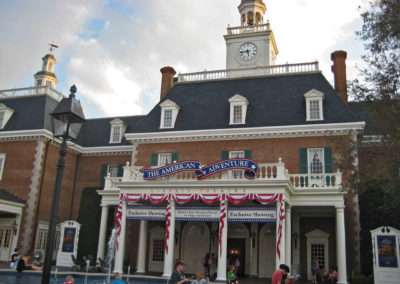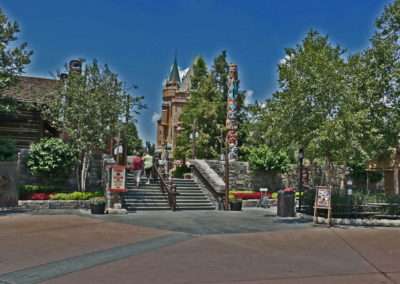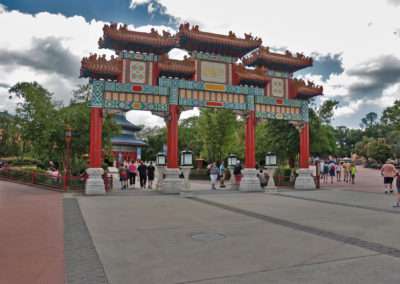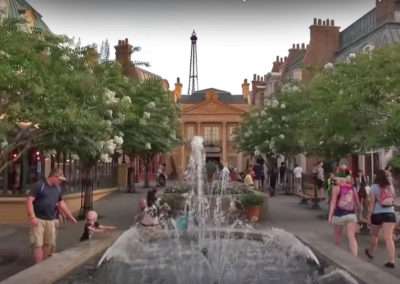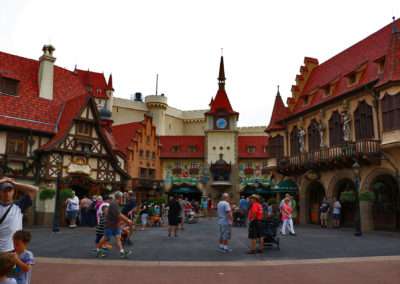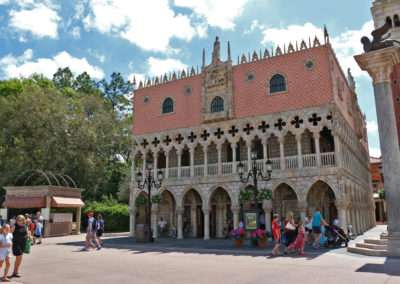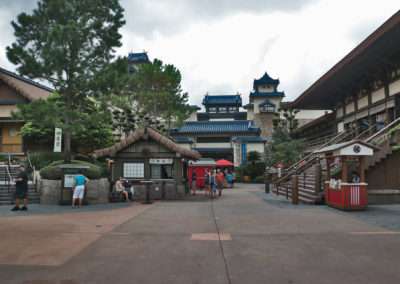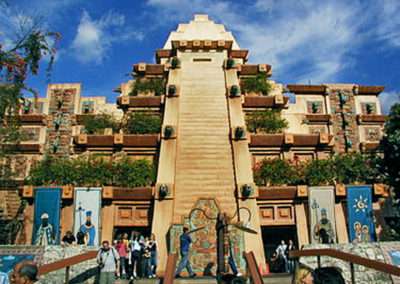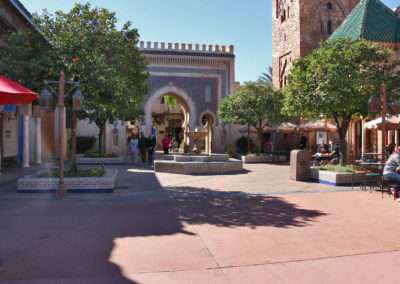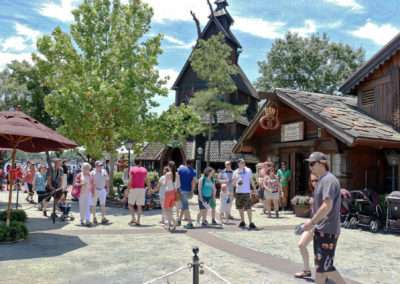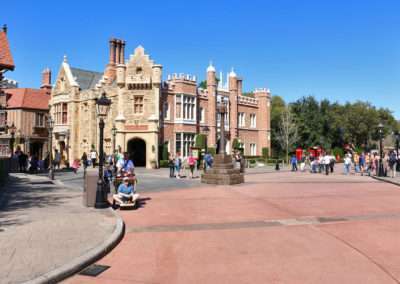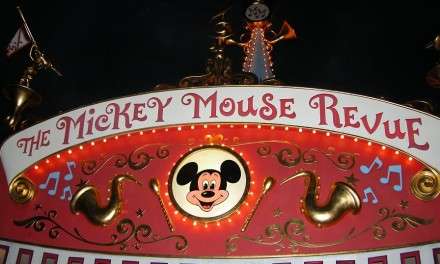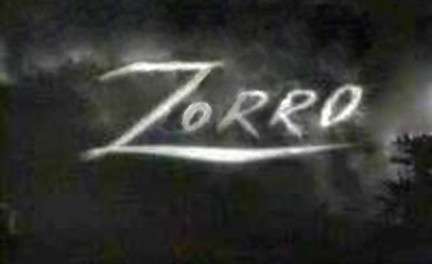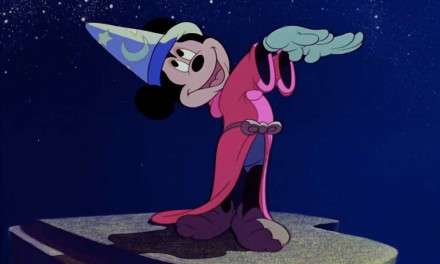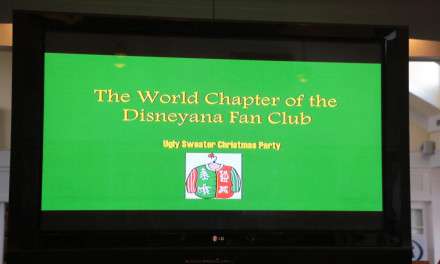EPCOT holds a special place in my Disney heart. My first visit was about a month after its opening, October 1st, 1982. My first ride experience was Spaceship Earth, and this attraction also has sentimental meaning for me. I still immensely enjoy this iconic ride, very rarely attending without going on. I have seen all the opening day attractions, and the changes throughout the years. The Park celebrates milestones in “Human achievement in technology and International culture. This morphed into two “sections”…Future World and World Showcase. The park is considered a permanent “World’s Fair” with both areas surrounding a large man-made lake, World Showcase Lagoon, the walking distance of 1.2 miles, which spawned the amusing acronym EPCOT…”Every person comes out tired!
As we all know, Walt’s amazing vision of the futuristic city, which bordered on utopia, never reached fruition in the final outcome of EPCOT, mainly because the Disney Company did not want to maintain and manage a city, especially without the guiding hand of Walt himself. The final outcome is the EPCOT we all know and love today. But I digress, this article is about the early plans of EPCOT’s “World Showcase” and how the original plans and ideas have changed into what is present today. Future World will be fodder for my next submission.
The plans for the EPCOT were unveiled on October 2nd, 1978 by then President and Chief Executive Officer of Walt Disney Productions Card Walker. At the 26th meeting of the World Congress of the International Chamber of Commerce in the Contemporary Resort, which was attended by thousands of the business world’s most influential business members, including then Florida Governor Reubin Askew, Secretary of State Henry Kissinger and President Carter, Walker told of the grand plan. EPCOT center would hold two main themed areas…”Future World and World Showcase.
Walker stated that the Showcase of participating nations would advance the opportunity to stage their countries, traditions and cultures in a true “People to People” interactions, because the pavilions would by managed and run by the citizens of their country. They would man the attractions, restaurants and shops, most staying for a year, to interact with guests and other countries for a mutual understanding of each other and their place in the world. At the time, there were 10 interested countries…The United States, United Arab Emirates, Kingdom of Morocco, the State of Israel, Federal Republic of Germany, Canada, the French Republic, the Italian Republic, Japan and Mexico. He went on to say there was a planned second phase, with more countries to be added in the next five years, including Spain and Equatorial Africa.
In reality, World Showcase has not changed that much from then to the present, but it is interesting to note the differences in the original pavilions then the ones here today…Below are the then narratives of the planned pavilions from 1978…
Israel… On the shorelines of the Israel Pavilion, the ruins of an ancient minaret serve as an information center. Olive and cypress trees line the entrance and provide shade for buildings and traveler alike. Beyond the pavilion’s entrance, the rising walkways lead travelers to a courtyard setting with shops clustered around the perimeter. The bazaar atmosphere of a marketplace in Israel permeates the interior and exterior of the shops. Tapestries, custom wood and brass items, jewelry, fashion apparel, and quality gifts provide guests with a small piece of Israel to take home.
Morocco… At the end of a short journey over the promenade, an adventure into the life and personality of Morocco begins. The visitor may rest or photograph near the rustic paths and exotic plants of Hesperides Gardens before visiting the jagged rock formations of Hercules Grotto. An arcaded bridge with ceiling artwork depicting Morocco’s five Great Dynasties connects the upper level of the grotto and Jemas Square. Jemas Square is the gateway to the main body of the pavilion. The Koutoubia Minaret stands above the square, center pieced by an elaborately decorated fountain, and from here glimpses of the Medina (ancient city) can be seen through the Bab Boujeloud Gate. The Medina opens into the Southern Morocco sector. Here, lunch can be enjoyed in a desert Kasbah where scenes of the Moroccan landscapes pass before the diners. Later in the evening, the Kasbah features a “Magic of Morocco” dinner show.
Japan… The entrance to the Japan pavilion is marked by a traditional wooden archway, located along the shoreline of the World Showcase lagoon. Guests will walk past a ceremonial temple bell and an ornately decorated pagoda before arriving at the pre-show area for a carousel theater show entitled, “The Winds of Change.” Through the magic of audio-animatronics and film, this four-act show traces the major influences on Japanese culture from the earliest Chinese visitors to the present. The show concludes with a multiple screen film presentation depicting modern Japan’s vast manufacturing output and its impact on the rest of the world. Exiting the carousel theater, guests will be greeted by neon lights and music typical of the Ginza, a recreation of downtown Tokyo’s famous nighttime shopping and entertainment district.
United Mexican States… The Mexico Pavilion is a reflection of the country itself: a country boldly moving into the future without losing touch with its proud heritage. The pavilion’s fair weather entrance exposes guests to a modern interpretation of an ancient Indian pyramid against the background of the main show building, which has an enormous mural, covering the entire front of the structure. As guests pass into the pyramid, they find that the polished gold exterior is, in reality, made of mirrored windows that reflect the sun’s searching rays. At night, the effect is reversed and pyramid becomes a shining beacon of light. This is the first of many surprises that await guests in the Mexico pavilion. The highlight of the pavilion is a water excursion with colorful boats themed to the famous Xochimilco Gardens. They convey guests through the history of Mexico.
France… Paris is the heart of France, and this city’s street life and flavor, which revolve around the River Seine, are captured in the French pavilion. Guests can walk along the waterfront’s tree-lined embankment. Above them, the promenade is lined with bookstalls and poster kiosks. This boulevard borders an outdoor cafe where guests dine under brightly colored canopies. The cafe itself is located in the foreground and interior of a handsomely arcaded building modeled after the Rue de Rivoli. Leaving the entrance area, guests walk the street and stairway leading to Montmartre — the artists’ quarter of Paris.
Canada… The Canada Pavilion is based on an outdoors theme that re-creates the majesty of the Canadian wilderness: roughly cut log dwellings, river gorges, steep mountainsides. All roads converge on Salmon Island where the rugged natural beauty of the Canadian outdoors stands alone. Waterfall, all pine trees and an abandoned mine tunnel seem to mark a dead-end until a waterfall magically parts and a drawbridge extends out, beckoning guests into the Canadian Circlevision Theater. Here guests will be surrounded by nine screens for the spectacular film “Canada the Beautiful” in Circlevision 360.
United Arab Emirates… Guests will immediately pass two ancient Arabic Dhows (sailing ships). Inside the pavilion, visitors first experience the excitement of a re-created Bedouin encampment. Located at the center of this deserted oasis will be the traditional ascetic black tents that symbolize Arabian warmth and hospitality. Then, guests are beckoned by the opulent royal marquis to enter an Arabian Nights experience, a thrilling magic carpet ride through the Arab World’s most fascinating cultures, both past and present. As guests glide above the courtyard area, a powerful mythical character appears before them to serve as narrator and guide through the adventure.
Federal Republic of Germany… Guest entering the German pavilion of World Showcase will find them in a spacious plaza surrounded by ornately decorated buildings representing traditional as well as contemporary German goods. A glockenspiel with life-sized animated figures adorns the plaza clock tower and a sculptural fountain depicts the well-known story of St. George and the Dragon. The plaza ramps down to a sunken courtyard where guests can enjoy a snack and a view of the boarding area of the German Rivers ride. The ride is a simulated cruise down Germany’s most famous and picturesque rivers: the Rhine, the Tauber, the Ruhr and the Isar. Guests will ride past intricately detailed miniatures of famous landmarks including Neuschwanstein Castle, the Garmisch Ski Area, Rothenberg and the Cologne Cathedral. The miniatures will be scaled so that they will appear to be full sized scenes viewed from a distance. In addition to the miniatures, the ride will feature several life-sized tableaus which will appear as animated visions in the sky. These tableaus depict milestones in German history and culture. The ride debarks at an authentic beer garden where guests can enjoy food, drink and music in the most festive of German settings.
United Kingdom… Green lawns, ornamental gardens, gable roofs, and spires form the setting for romantic expectations. The promenade separates an English pub from the main body of the pavilion. Its shoreline location affords its guests a scenic view over a River Thames and canal setting. Across from the pub, shops and an Albert Memorial style information booth line the main village thoroughfare. The iron and glass work of St. Pancras or Victoria Station is recalled in the structure of the train shed. Nearby, guests can walk through passenger cars where scenes of the British Isles are re-created through the car’s windows. Exiting the train, guests may enter a 200-seat theater for a traveling film presentation on the United Kingdom.
Italy… The classic grace of Italy’s art and architecture form the backdrop for the World Showcase’s Italian Republic Pavilion. Colonnades, gardens and shops are overlooked by a restaurant featuring cuisine in the grand Italian tradition. The guest enters from a stone footbridge modeled after Venice’s pedestrian bridges. Gondolas are docked nearby, an obelisk rises from the center of the courtyard, and from here guests can see recreations of some of Italy’s greatest Renaissance buildings. Shops feature examples of time-honored Italian workmanship. One area of the pavilion will be set aside for an exciting collection of art.
The American Adventure at this time was a building, which sat on stilts and was constructed to ape the architectural buildings of Future World. It was located right over the bridge where the two Disney Traders shops are located today, between Future World and World Showcase. This “Host” building had the show on the second floor and the guests walked underneath, entering World Showcase. As today, Mexico was to the left, and Canada was to the right, as they bordered the United States.
Spain, Equatorial Africa and Israel, the three pavilions advertised in early EPCOT center publications, were never constructed. Even though these three pavilions never came to fruition, there are presently still nine areas available for additional pavilions if needed. Two are on both sides of the present American Adventure, and two more on either side of the United Kingdom.
EPCOT premiered its first fireworks show in October of 1982, called the Carnival de Lumiere. New World Fantasy followed in 1983. June, 1984 brought us Laserphinics, or Laserphonic Fantasy. This would prevail until IllumiNations bowed in January, 1988. This was sponsored by General Electric. The name IllumiNations continued as the moniker of the show, even going through a spat several variations. In 1996, Disney World’s 25th anniversary it was called IllumiNations 25, until 1998, changing over to IllumiNations 98. In 1999 it again morphed to IllumiNations 2000…Reflections of Earth. After the Millennium, it was known just as IllumiNations…Reflections of Earth. Today it is sponsored by Siemens.
Many guests believe that the pavilions are paid for by its representative government. This is not true, although it was what Disney was hoping for. Instead, many businesses ponied up the money, and sponsored pavilions, advertising and selling their products and other merchandise. A list of sponsors from 1982 is such…
Mexico… Moctezuma Brewery, San Angel Inn. Germany… Bahlsen, Brauerei Back and Co. Goebel, Hutschenreuther, Schmitt Söhne. France… Barton & Guestier (B&G), Guye Larouche, Lanson Champagne, the France Chefs (Paul Bocuse, Gaston Lenôtre, Roger Vergé, and Associate Didier Fouret). The American Adventure… American Express, Coca Cola. China…no participant. Italy…Alfredo, The Original of Rome, Brolio/Ricasoli & Bersano Wines of Italy. United Kingdom… Bass Export Ltd., Pringle of Scotland, Royal Doulton. Japan… Mitsukoshi, Inc. Canada…No participant. The only country that is run by its government is Morocco. In1984, the pavilion opened. King Hassan II of Morocco wanted to share his countries culture at EPCOT; and sent a core of artists and artisans who built the amazing interior and exterior motifs. It is now run by an business group set up by the government.
You can see the difference between the EPCOT of old and todays offering. Major attractions and parades have come and gone, but today, with its Food and Wine Festival, Garden and Flower show and many refurbished and new rides, EPCOT does Walt Disney’s vision proud, and millions of guests still love “Walking around the World”

